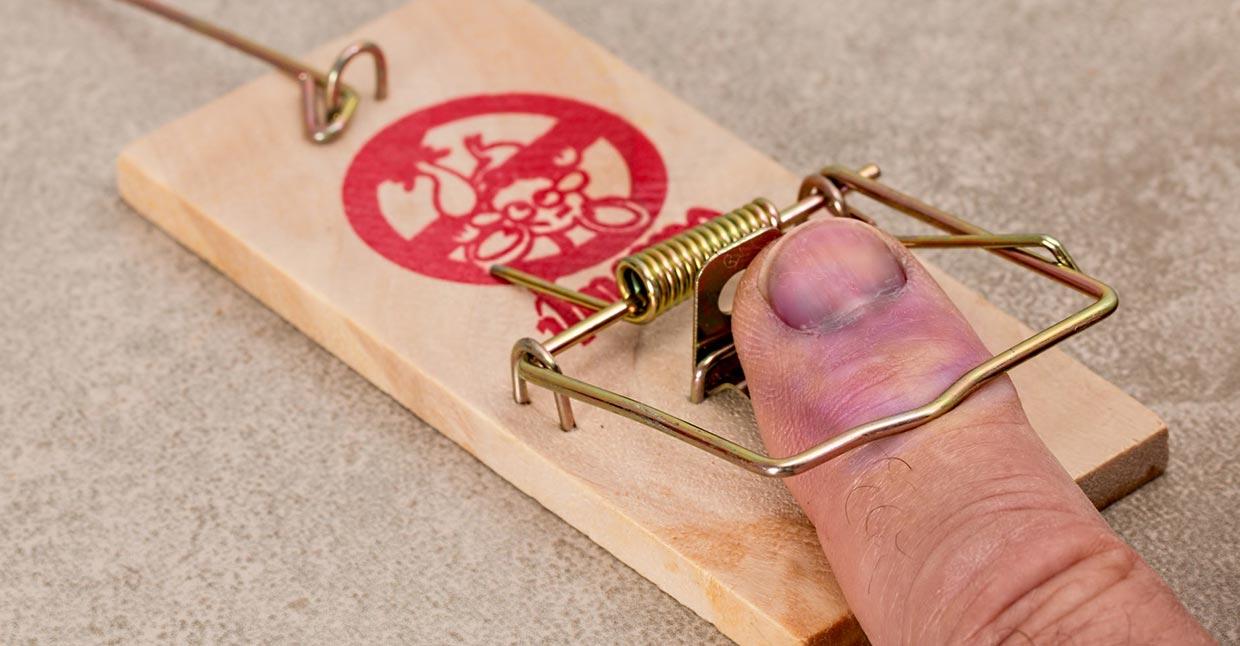
How harmful are negative emotions and experience in advertisements, online usability, and the remaining customer journey?
An annoying commercial. A slow website. A web shop package that is delivered one day later than expected. A nasty comment by the call center lady.
One by one, these are examples negative brand experiences a consumer can encounter. A bump in the customer journey. How detrimental are these for a brand? Some customer journey evangelists preach that each interaction moment should be unique, amazing, and unforgettable. Negative emotion would kill the customer journey. What does science have to say about the effect of negative experiences on the customer journey?
Little research has been done to discover the effects of negative emotions and experiences. In this blog, I will highlight the available knowledge, complemented by insights from our own research at Unravel Research.Negative emotions are not necessarily… negative
Negative experiences have a long history in marketing. From fear-inducing insurance commercials, to deliberately arrogant salespeople in luxury fashion boutiques. Did you know that, for these examples, research has shown that they can increase sales?
Likewise, a little frustration in the online world does automatically hurt your sales numbers. Airplane tickets price comparison websites purposefully let their visitors wait a little longer before showing the results. Yup, it’s annoying – but it also significantly increases the likelihood of someone booking a flight.
Of course, this is not a license for bullying your customers, because it is no winning marketing formula. In most cases, a negative experience will only hurt the brand. The question is: When will it have a positive impact?
Our own EEG research sheds a light on this question. Negative experiences can be very effective, if they are followed directly by a positive experience. When the brain encounters something negative, it feels even better when we finally do have a positive experience. In the brain, we can observe this in the so-called frontal asymmetry. Frontal asymmetry indicates positive emotion and approach motivation. On the other hand, when the metric dips, this means something can (and should) be improved. However, we sometimes observe a negative dip, directly followed by a positive spike. Let’s review some examples.

In our EEG research, we review different parts of the customer journey. Image this: a customer would like to book a hotel at an online booking website (you know which one we’re talking about). It shows you the desired location, date, and number of guests. Dozens of results pop up. The overview of beautiful hotels leads to a relative high number of positive emotions in the brain. Then, a red error “You just missed it! Your dates are popular, we’ve run out of rooms” catches your eye. Immediately, a dip is perceived in the frontal asymmetry – that sucks! This dip immediately disappears when the next hotel is perceived and brings about even stronger positive emotions than before seeing the error.
When a slight disappointment is followed by a better alternative, it tastes even sweeter than in isolation.
In commercial research, we see a similar effect. Headache commercial by Advil are not enjoyable to look at: They show intense close-ups of people who are clearly suffering, almost inhumanely, by a nasty headache. These looks of horror and pain are reflected neutrally by an avoid motivation, a sign of negative emotion. Then, Advil brings you the much-needed salvation: Positive emotions increase in the brain. Again, a short moment of negative emotions paves the road for a positive experience. What is more, research by Nielsen (2016) has shown that it not as bad as originally thought to let a commercial induce both negative and positive emotions. The worst commercials are those who bring about no emotion at all.
In short: Negative experiences can increase the attraction of a product, but only with short-term annoyances that are directly followed by something positive. Now, we’ve arrived at the next question: When are negative experiences harmful for your brand?

A painful face leads to negative emotion (left), directly followed by positive emotions when seeing the solution (right).
So, when is a negative experience harmful?
A negative experience in isolation – so without being followed by a positive experience – will not do your brand any good. Just consider this: Most steps in the customer journey are in isolation. A bad call with the helpdesk is rarely accompanied with a positive experience of the same brand. Same goes for a negative product experience, like a smartphone that stops working suddenly.
In these cases, the classic association principle is at work. People experience a negative emotion, which results in a change in brand perception. This decreases the likelihood of someone purchasing a product from that brand. So, for all steps in the customer journey the same adage hold: the more positive, the better.
In our own EEG neuromarketing research on commercials, online usability, and shop experience, we’ve noticed that most short-lived irritations are not followed by a positive counterpart. These irritations indicate fallbacks in your customer journey, which, often, can be taken away quite easily.
There’s a specific moment in the journey where marketeers should be especially carefully with negative experiences: When showing the brand logo.
Compared to other points in the advertisement, these moments are associated with brand perception even more strongly. Specifically, the seconds right after showing the brand are crucial for a healthy brand. Just like Pavlov’s dogs associated the sound of a bell ringing with food – up until the point where the dogs started excreting saliva with the sound of the bell – is a brand logo nothing more than the human counterpart of this effect.

At Unravel Research, we analyze commercials, websites, and other customer journeys on their emotional impact every day. Is a brand logo depicted? We’ll pay extra attention to what happens in the brain the following seconds.
The seconds after a logo-display are the most determinative for the structure of the memory constructs that form the brand identity. This moment is crucial, so you only want to induce positive emotions. EEG helps you to track positive and negative emotions per millisecond. Giving its ability to measure emotions so precisely makes EEG an interesting research method to measure the actual experience of customer journeys.






